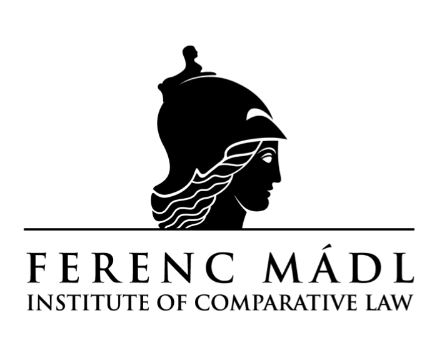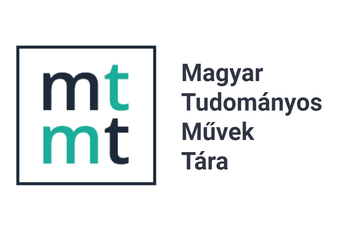Behind the protection: Key issues of the child’s capacity to exercise fundamental rights
DOI:
https://doi.org/10.46941/2023.e1.7Schlagworte:
children’s rights, legal capacity of fundamental rights, best interest of the child, decision-making capacity, parental rights/obligations, proportionality, freedom of assembly.Abstract
The study attempts to reveal from a dogmatic-analytical point of view, the issues related to the child’s capacity to exercise fundamental rights based in practice-oriented approach, with case law examples. This children's rights focus is part of the larger research: the FULCAP research project aims to develop a complex concept and doctrine of legal capacity for fundamental rights (as a concept map) and to construct a normative concept of legal capacity for fundamental rights. The research seeks to answer how the definition of legal capacity for fundamental rights could be constructed, among others such as that of children. Namely the legal capacity of a child requires that the child enjoy a certain level of capacity to exercise rights and be able to exercise his or her fundamental rights. Based on the results of this research, the first part of the study identifies and examines the key factors that affect the child's capacity to exercise rights, the direct exercise of rights, or restrict it. First, the relevance of age and maturity; second, the parental rights and obligations; and finally, other factors: institutions, values, and public interest. The second part of the study tries to shed light on these factors using the example of the exercise of children's freedom to assembly and its limitations. Finally, the study sets up an "exercise of rights scale" and delineates the possible alternative legal solutions in the context of exercising the children’s freedom of assembly.
Literaturhinweise
Archard, D. (2014) Children: Rights and Childhood. 3rd edn, Routledge: London; https://doi.org/10.4324/9781315740676.
Brando, N., Lundy, L. (2022) ‘Discrimination and Children’s Right to Freedom of Association and Assembly’, Harvard Human Rights Journal, 35(2), December 2022. Available at: https://harvardhrj.com/2022/12/discrimination-and-childrens-right-to-freedom-of-association-and-assembly/ (Accessed: 1 February 2023).
Daly, A. (2013) ‘Demonstrating Positive Obligations: Children’s Rights and Peaceful Protest in International Law’, The George Washington International Law Review, 45(4), pp. 763-813.
Daly, A. (2016) ‘Article 15: The right to freedom of association and freedom of peaceful assembly’ In the series edited by Alen, A. et al. (eds), A Commentary on the United Nations Convention on the Rights of the Child. Leiden: Boston.
European Union Agency for Fundamental Rights and Council of Europe (2022) Handbook on European law relating to the rights of the child [Online]. Available at: https://www.echr.coe.int/Documents/Handbook_rights_child_ENG.PDF (Accessed: 1 February 2023).
FRA (2017) Mapping minimum age requirements concerning the rights of the child in the EU [Online]. Available at: https://fra.europa.eu/en/publication/2017/mapping-minimum-age-requirements-concerning-rights-child-eu (Accessed: 1 February 2023).
Hammarberg, T. (1990) ‘The UN convention on the rights of the child – And how to make it work’, Human Rights Quarterly, 12(1), pp. 97–105; https://doi.org/10.2307/762167.
Invernizzi, A., Williams, J. (2011) Introduction. The Human Rights of Children. From Visions to Implementation? Routledge: London.
Lápossy, A., Pásztor, E., Somody, B., Stánicz, P. (2022) ‘The dogmatic points of people's capacity to exercise fundamental rights - Part I’. MTA Law Working Papers, 2022/1. [Online]. Available at: https://jog.tk.hu/en/mtalwp/az-ember-alapjog-gyakorlasi-kepessegenek-dogmatikaja-i-resz (Accessed: 1 February 2023).
Lundy, L., Byrne, B. (2017) ‘The four general principles of the United Nations Convention on the Rights of the Child: the potential value of the approach in other areas of human rights law’ in Brems, E., Desmet, E., Vandenhole, W. (eds.) Children's Rights Law in the Global Human Rights Landscape: Isolation, Inspiration, Integration? Routledge: London; https://doi.org/10.4324/9781315637440-4.
Sandberg, K. (2018) ‘Children’s right to protection under the CRC’, in Falch-Eriksen, A., Backe-Hansen, E., (eds.) Human rights in child protection. Palgrave: Macmillan, pp. 15-38; https://doi.org/10.1007/978-3-319-94800-3_2.
UNICEF (2007) Implementation Handbook for the Convention on the Rights of the Child [Online]. Available at: https://www.unicef.org/lac/media/22071/file/Implementation%20Handbook%20for%20the%20CRC.pdf (Accessed: 1 February 2023).
Vandenhole, W. (2017) ‘Distinctive characteristics of children’s human rights law’, in Brems, E., Desmet, E., Vandenhole, W. (eds.) Children's Rights Law in the Global Human Rights Landscape: Isolation, Inspiration, Integration? Routledge: London; https://doi.org/10.4324/9781315637440-4.





